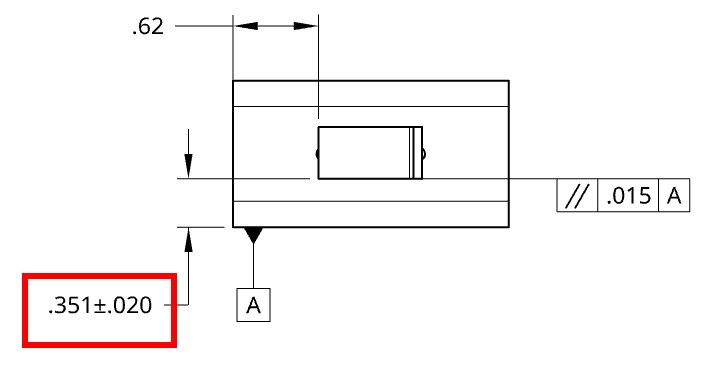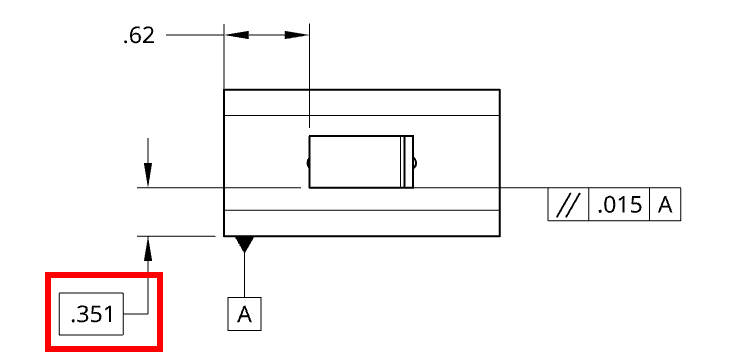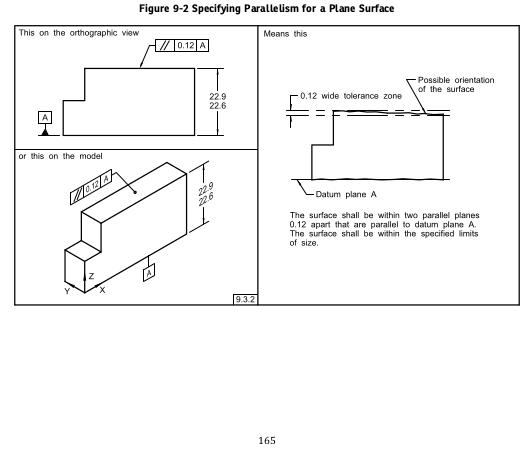mackra
Mechanical
- Sep 7, 2011
- 17
ASME Y14.5
At my work, we don't use GD&T much, nor do I. I'm creating an assy drawing and specifying alignment (parallelism) of one part to another. The two images are sort of representing what I'm wanting to accomplish. Which of the two images below correctly dimension the .351 distance? I'm getting feedback that the first image (Option 1) is double dimensioned and it must be a basic dimension (Option 2). However I disagree as the Figure 9-2 in ASME14.5-2018 shows something similar and is not a basic dimension.
Option 1 Drawing as submitted and rejected

Option 2 Drawing as what's being stated is "correct"

AMSE Example

I have yet to find an example using Option 2.
At my work, we don't use GD&T much, nor do I. I'm creating an assy drawing and specifying alignment (parallelism) of one part to another. The two images are sort of representing what I'm wanting to accomplish. Which of the two images below correctly dimension the .351 distance? I'm getting feedback that the first image (Option 1) is double dimensioned and it must be a basic dimension (Option 2). However I disagree as the Figure 9-2 in ASME14.5-2018 shows something similar and is not a basic dimension.
Option 1 Drawing as submitted and rejected

Option 2 Drawing as what's being stated is "correct"

AMSE Example

I have yet to find an example using Option 2.
